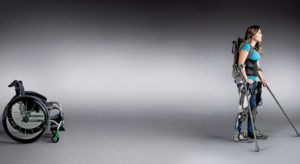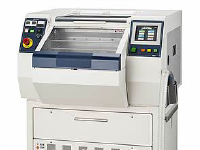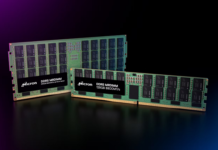
Although most of us have never seen an exoskeleton beyond those in pop culture, they’ve been around for decades. The first examples appeared at the end of the 19th century when a running and jumping apparatus was developed using pneumatics for power. In the 1960s, companies developed wearable “augmentation” devices aimed at military and industrial uses, but these devices were too large and heavy to be practical. Recent component miniaturizations and weight reductions have brought wearable exoskeletons to reality, evidenced by a paralyzed woman completing the 2012 London Marathon wearing one.
Exoskeleton Types
Exoskeletons are dividable into two groups: Powered and unpowered (“passive”). Passive exoskeletons rely on springs or other motive-power sources to augment a person’s movement. These units redistribute loads, provide stored energy via springs, and provide shock absorption in settings that may introduce repetitive or long duration loads on the body. Powered exoskeletons augment or deliver motion capabilities using motors, sensors, actuators, power sources, and control units. These powered units receive signals from one of many user inputs, interpret these signals, and produce an intended motion. Image sensors, a central processing unit (CPU), and actuators replace the nerves, brain, and muscles of a biological system.
Current Focus: Walking Assistance
The concentration of research efforts today is on providing mobility to persons with diminished physical capabilities. Several companies have produced prototype and low-production models of walking assist exoskeletons. These exoskeletons are typically a set of skeletal-leg braces and footrests strapped to the user’s legs, with actuators powered by rechargeable batteries. Kinetic sensors such as gyroscopes, tilt sensors, inertial sensors, and accelerometers provide necessary feedback to help an exoskeleton stay balanced and on course.
One semiconductor company making sensors to help exoskeletons remain balanced is Analog Devices. Analog Devices’ iSensor MEMS gyroscope subsystems reliably detect and measure the angular rate of an object under severe and complex operating conditions. For instance, the Analog Devices ADIS1647x Precision Mini Industrial IMUs provides a simple method of integrating a complete inertial system into industrial and Internet of Moving Things (IoMT) applications, including exoskeletons where it can help with issues including stabilization. For instance, the ADIS16477 inertial measurement unit (IMU) sensor offers six-degree-of-freedom sensing using triple-axis accelerometers and gyroscopes housed in a small, standard surface-mount assembly package. Each of the ADIS1647x inertial sensors incorporates industry-leading iMEMS technology and signal conditioning to optimize dynamic performance.
Several methods are used to communicate the intent of a user to an exoskeleton to produce the desired motion:
- Walking sticks or canes provide motion sensing that communicates with one’s legs.
- Body tilts that sensors pick up instruct an exoskeleton of intended directions of motion.
- Electromyographic (EMG) control allows a user to operate an exoskeleton by flexing certain muscles.
- Electroencephalography (EEG) sensors in a special cap pick up nerve signals in the head. Training helps a user produce signals for the sensors to detect. Soon, learning algorithms may be able to sense a person’s natural brain activity thereby signaling movement.
In concert with actively guided movements, microprocessors can perform predetermined motions, such as sitting down, that a control panel located on the wrist or other convenient location activates. Walking assistance exoskeletons can be useful for persons with permanent mobility loss in their legs or as a therapy, training device to help regain physical competence.
Turtle or Cat?
Prevention of falls is a major goal of exoskeleton developers. Using algorithms that detect leg movement deviations from a regular gait (that is, “slip”), motors and actuators can apply force to counter this slip. If a slip cannot be mitigated, exoskeletons must react to a fall. Researchers and engineers are shifting their focus from the turtle quandary of how to correct one’s stance after falling badly (resulting in being upside down—Figure 1) to the mystery of a cat that always manages to land on all four feet. The task is to determine how to fall intelligently so that standing back up is a simpler task. Walking assist exoskeletons have programmed algorithms that perform a “graceful collapse” if the skeleton loses power.

Figure 1: Turtle + upside down = trouble. The same is true for heavy exoskeletons.
Exoskeletons must receive instruction and learn how to react to small stumbles as well as how to optimally position themselves to roll after a more aggressive fall. Being able to fall correctly is a vital skill; teaching this skill to robotic exoskeletons make them a lot more practical for real-world use. Cybernetic exoskeletons working, for example, at construction sites are less likely to cause personal and property damage if an unavoidable fall is as controllable as possible. Minimizing damage during a fall would also likely reduce significant repair costs.
Other Applications on the Exoskeleton Spectrum
Beyond high personal-impact equipment like walking assist exoskeletons are many other applications that are now possible with current technology. Imagine a minimalist exoskeleton not much bigger than a backpack that provides for individuals with compromised balance sufficient muscle strength using position sensors, motion sensors, and gyroscopes to give the wearer steady support. Industrial applications using a range of full or partial exoskeletons may help counter the global economic burden caused by lower-back pain (LBP), resulting from occupational stressors such as physical lifting. Limiting lifting exertion as well as reducing repetitive motion burdens by employing full or partial exoskeletons is certainly a path to decreasing the expense of worker injuries.
As materials and components continually get smaller and lighter, exoskeletons should continue to be useful for new applications. Looking over the horizon, we are likely to see first responders using exoskeletons to increase their effectiveness as well as to reduce the dangers inherent in emergency situations. Police officers may even abandon their Segways in favor of exoskeleton-assisted equipment.


















